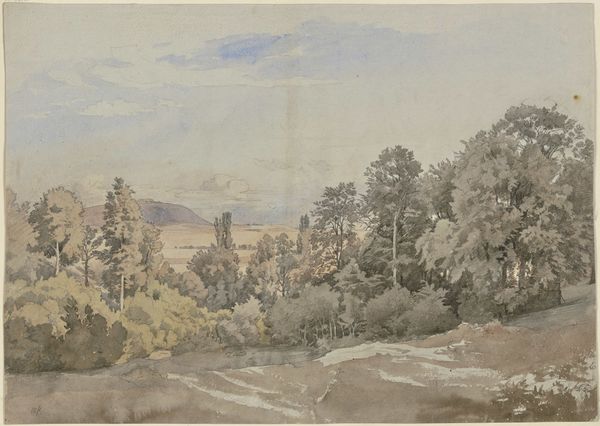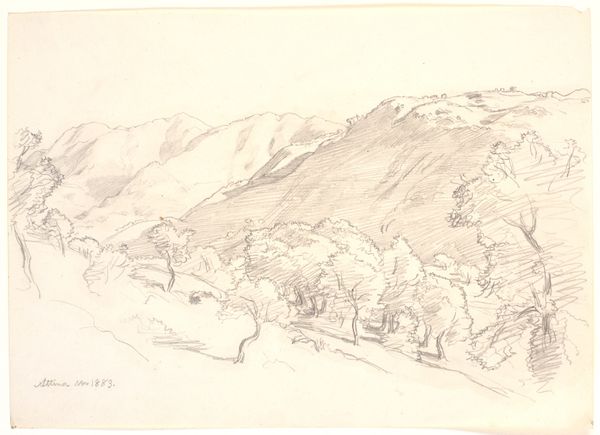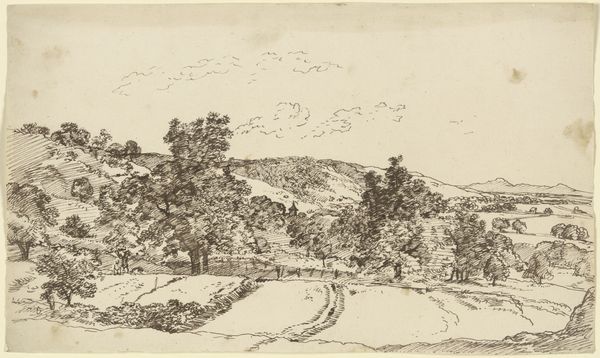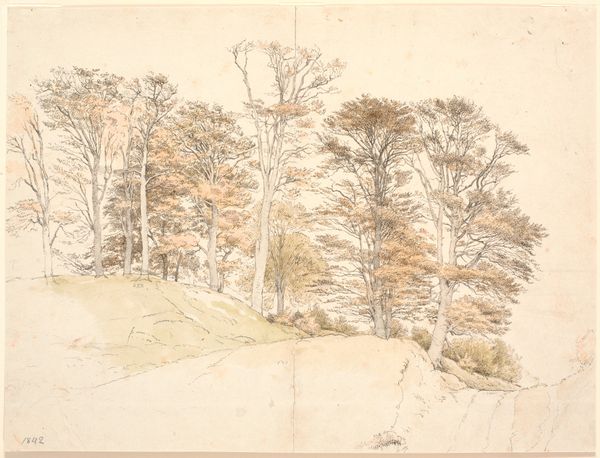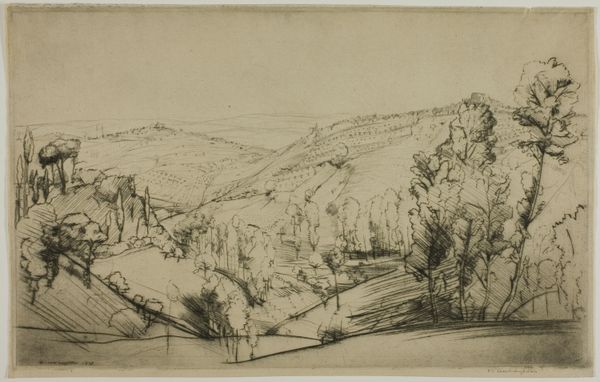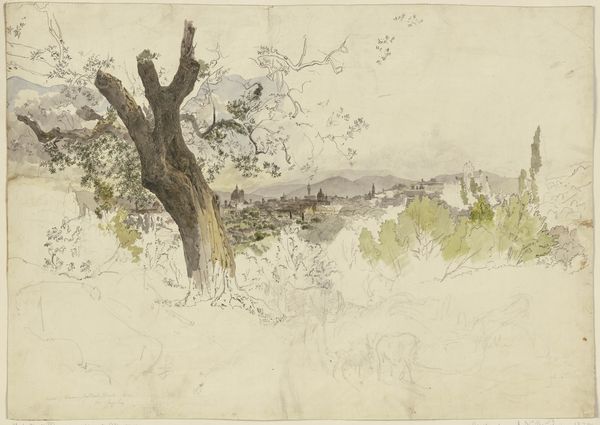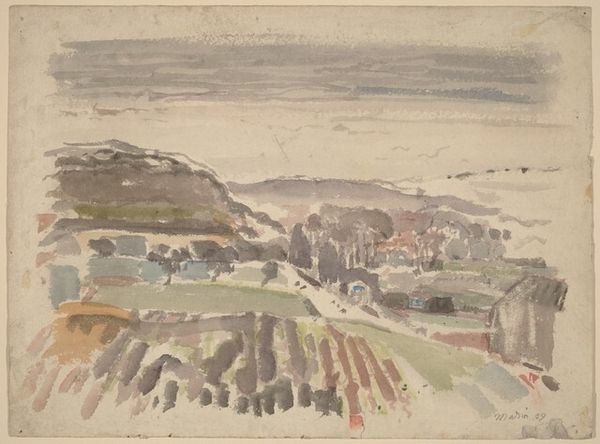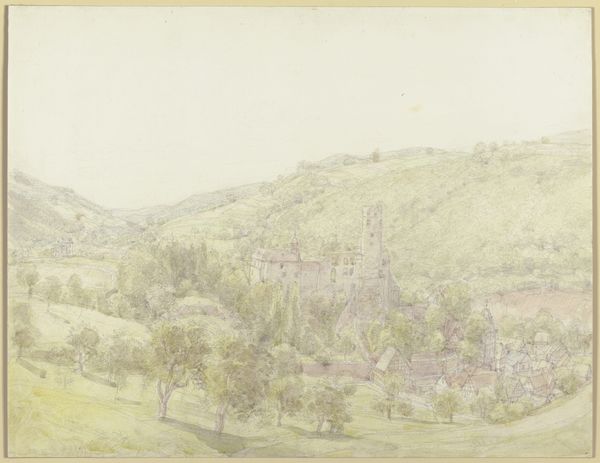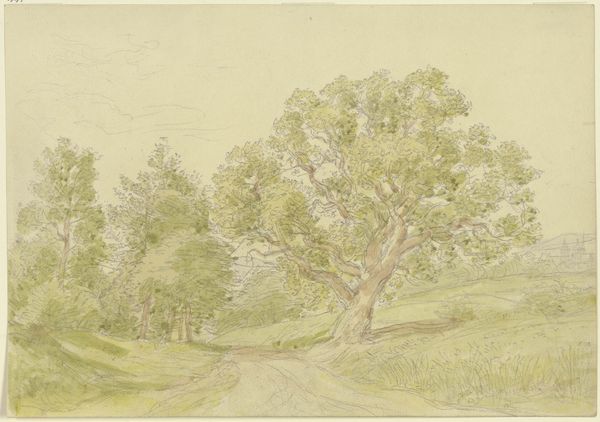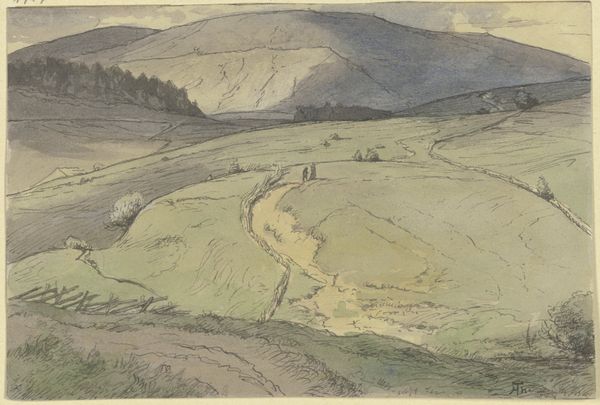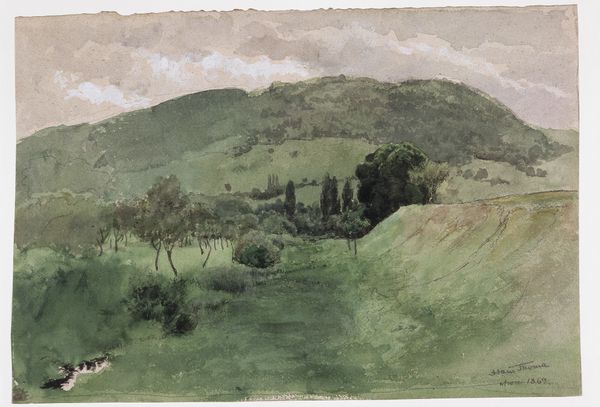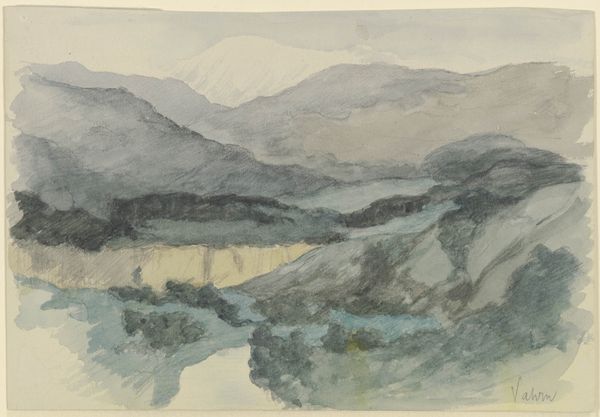
drawing, painting, plein-air, watercolor
#
drawing
#
16_19th-century
#
painting
#
plein-air
#
landscape
#
watercolor
#
romanticism
#
watercolour illustration
Copyright: Public Domain
Wilhelm Steinhausen made this landscape study called Lindenfels with pencil and watercolor. In the late 19th century, institutions like the Städel Museum, where this work is held, played a crucial role in shaping artistic taste and promoting particular visions of German identity. This tranquil landscape, with its soft washes of color and focus on the natural world, can be seen in light of Germany’s burgeoning national identity. The selective presentation of landscapes was used to evoke feelings of national pride, connecting the citizenry to their homeland. The depiction of nature became a powerful tool in forging a sense of belonging and shared cultural heritage. The values of the Biedermeier era with its focus on domesticity and retreat from public life are obvious here. To fully understand Steinhausen's work, we need to delve into the cultural and political context of 19th-century Germany and consider how institutions like museums and art academies shaped the production and reception of art.
Comments
No comments
Be the first to comment and join the conversation on the ultimate creative platform.
